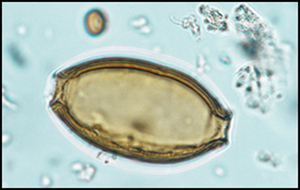Article contents
The last meal of Tollund Man: new analyses of his gut content
Published online by Cambridge University Press: 21 July 2021
Abstract

The last meal of Tollund Man, a bog body from Early Iron Age Denmark, has been re-examined using new analyses of plant macrofossils, pollen, non-pollen palynomorphs, steroid markers and proteins found in his gut. Some 12–24 hours before he was killed, he ate a porridge containing barley, pale persicaria and flax, and probably some fish. Proteins and eggs from intestinal worms indicate that he was infected with parasites. Although the meal may reflect ordinary Iron Age fare, the inclusion of threshing waste could possibly relate to ritual practices. This re-analysis illustrates that new techniques can throw fresh light on old questions and contribute to understanding life and death in the Danish Early Iron Age.
- Type
- Research Article
- Information
- Copyright
- Copyright © The Author(s), 2021. Published by Cambridge University Press on behalf of Antiquity Publications Ltd.
References
- 8
- Cited by




